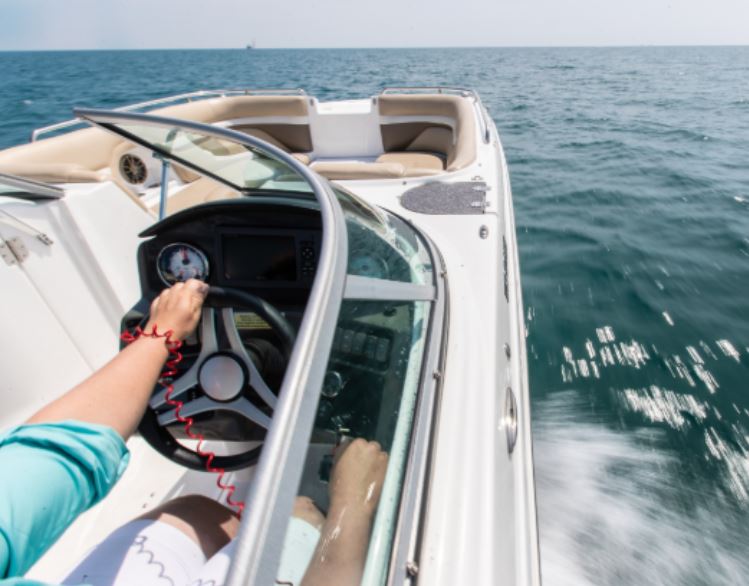A new federal law went into effect on April 1, that requires the operator of a boat with an installed Engine Cut-Off Switch (ECOS) to use the ECOS link while operating on all federally navigable waterways.
The link is usually a coiled bungee cord lanyard clipped onto the operator’s person, personal flotation device or clothing and the other end attached to the cut-off switch, but there are plenty of variations on the market, including electronic wireless devices.
When an operator is wearing a link while underway, the engine will cut-off if the operator is separated from the operating area, an occurrence that can happen if the operator is ejected from the vessel or falls within the vessel. The shutdown of the engine is essential for safety reasons. If the operator is ejected from the vessel, the shutdown may prevent the operator from impacting the vessel’s spinning propeller, and may aid the operator in safely returning to the drifting vessel.
The intent of these new laws is to improve safety for all recreational boaters by reducing the potential for propeller injuries to recreational vessel operators, other users of the nation’s waterways, and marine law enforcement officers responsible for responding to runaway boats. Boats with motors less than 3 horsepower are excluded from the law.
The U.S. Army Corps of Engineers has authority to enforce federal law on the federal reservoirs, the U.S. Coast Guard patrol has the authority to enforce federal law on the border rivers.



